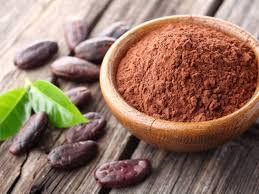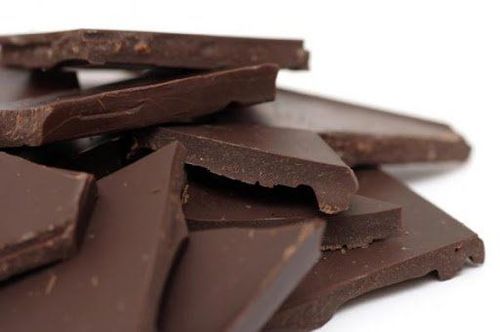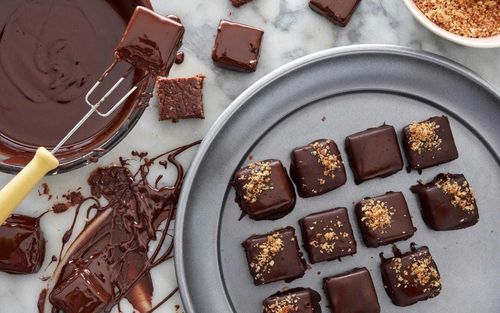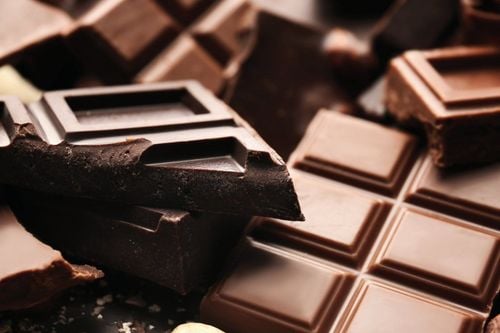This is an automatically translated article.
The beneficial health effects of dark chocolate stem from flavonoid antioxidants. Dark chocolate is derived from the cacao tree and cocoa is extremely rich in flavonoids, which are a type of flavonoid phytochemical. To make a delicious dark chocolate, what is dark chocolate made of and what is the production process?1. What is dark chocolate?
Dark chocolate is an extremely valuable food that dates back to 2000 BC. At the time, the Mayans from Central America were the world's first users of chocolate, drinking the drink as a bitter fermented beverage mixed with spices or alcohol. Today, long rows of chocolates lining store shelves are the end result of many steps, starting with a cocoa pod the size of your hand. The beans of the cocoa are separated from the hard outer shell and fermented, dried and roasted into the product we call cocoa beans. Then, the skin of the cocoa bean is separated from the flesh, also known as cocoa nibs. The nib is ground into a liquid called chocolate liquor and separated from the fatty part, or cocoa butter.Alcohol is further refined to create the cocoa solids and chocolate we eat. After the nib is removed, the cocoa beans are ground into cocoa powder for use in baking or beverages.
Dark chocolate contains 50-90% cocoa solids, cocoa butter and sugar, while milk chocolate contains 10-50% cocoa solids, cocoa butter, some types of milk and sugar. Although dark chocolate must not contain milk, traces of milk may be present due to cross-contamination during processing, as machines are often used together to produce milk and dark chocolate. Lower-quality chocolate may also have added butterfat, vegetable oils, and artificial colors or flavors. White chocolate does not contain any cocoa solids and is made simply from cocoa butter, sugar and milk.
One tablespoon of cocoa butter oil contains:
8 grams of saturated fat (4.5 grams of which is from stearic acid and 3.5 grams of which is from another saturated fatty acid). 4.5 grams of monounsaturated fat. 0.4 grams of polyunsaturated fat (most of which are omega-6 fatty acids).

Socola đen chứa 50-90% chất rắn cacao, bơ cacao và đường
2. Dark chocolate and health
Cocoa is rich in a type of phytochemical called flavonoids that may help protect the heart. Dark chocolate contains cocoa solids that are 2-3 times richer in flavonoids than milk chocolate. Flavanol has been shown to aid in the production of nitric oxide (NO) in the endolethium (inner cell membranes of blood vessels) which helps to dilate blood vessels and improve blood flow, thereby lowering blood pressure. Flavanols in chocolate may increase insulin sensitivity in short-term studies; In the long term, this can reduce the risk of diabetes.Observational studies also concur with the benefits of cocoa flavonoids. The link between blood pressure and high cocoa intake was described in a study of the Kuna Indians, an isolated tribe living on the Caribbean Coast of Panama. Hypertension is extremely rare in this group, even in older individuals, and even with diets higher in salt than most Western populations. As the Kuna migrated to urban environments and changed their diets, their rates of high blood pressure increased. Notably, their traditional cocoa intake is very high, with more than 5 cups a day of either Colombian cocoa powder or home-grown cocoa powder. Urinary levels of flavanols were significantly higher in island-dwelling Kuna, and their rates of death from heart disease, cancer and diabetes were significantly lower than in those living in urban centres.
3. What kind of chocolate should you buy?
You should choose dark chocolate 70% or higher to get the most flavonoids. Although the higher the percentage of cocoa solids, the greater the bitter taste.Store in a cool dry area (65-70 F) in sealed packaging. Do not refrigerate, as this can promote "re-" butter, a white coating when sugar rises to the surface due to excess moisture. Although this phenomenon does not affect the taste, it does not look appealing.
If stored properly, dark chocolate will keep for up to two years.
To melt: Dark chocolate should be heated gradually to avoid scorching. What does this, you can do on the stove on low heat or in the microwave at 50% power. Break the chocolate into smaller pieces and place in a pan or microwave to heat. Stir constantly (or every minute) to ensure even heat. Drizzle 1-2 tablespoons of melted dark chocolate over oatmeal, yogurt, or fresh fruit for a healthy snack.
Since the bitterness increases as the cocoa solids ratio is higher, try taking a small piece and letting it melt slowly in your mouth. This type of eating can provide a different, more enjoyable experience than chewing and swallowing a chocolate bar.

Nếu được bảo quản đúng cách, socola đen sẽ để được đến hai năm
4. Some interesting facts about dark chocolate
Cocoa is sometimes alkaline treated or Dutch processed, to improve taste and appearance. However, this results in a significant loss of flavonoids. The higher the percentage of cocoa solids, the higher the caffeine content. Two ounces of 70% dark chocolate contain about 50-60 mg of caffeine. Meanwhile, an 8-ounce cup of coffee contains 100-200 milligrams of caffeine. If your chocolate is already buttered, you don't need to scrape off all the chocolate. You can remove these buttery “re” surfaces by melting the chocolate, stirring, then letting the chocolate slowly cool back to its original solid form. Chocolate is derived from the cultivation, harvesting and transportation process, often using cheap labor or child labor abroad. Chocolate labeled “Fair Trade” certifies that the chocolate has been produced at a fair wage and does not use child labor. Any questions that need to be answered by a specialist doctor as well as customers wishing to be examined and treated at Vinmec International General Hospital, please contact the Website for the best service.Please dial HOTLINE for more information or register for an appointment HERE. Download MyVinmec app to make appointments faster and to manage your bookings easily.
Reference source: hsph.harvard.edu












